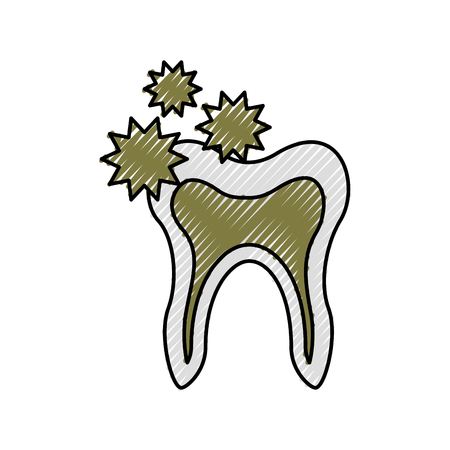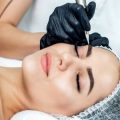Understanding the Hollywood Smile Phenomenon
The concept of the Hollywood Smile has become a defining trend in modern cosmetic dentistry, particularly as its appeal spreads across the UK. At its core, a Hollywood Smile refers to a set of flawlessly white, straight, and symmetrical teeth—an aesthetic ideal popularised by American film stars throughout the 20th century. The origins of this phenomenon can be traced back to the golden age of Hollywood, where on-screen personalities sought dental enhancements to achieve a camera-ready appearance. Over time, this pursuit of dental perfection has crossed the Atlantic, increasingly influencing British attitudes towards oral aesthetics. Today, more Britons are aspiring to emulate this glamorous look, leading to heightened demand for cosmetic dentistry solutions that promise not just oral health, but also visual transformation. As social media and celebrity culture continue to shape perceptions of beauty in the UK, understanding what constitutes a true Hollywood Smile is essential for anyone considering cosmetic dental treatments.
British Perspectives on Cosmetic Dentistry
When it comes to cosmetic dentistry, the British approach is distinctively different from the American ideal often portrayed in Hollywood films. Traditional UK dental aesthetics have historically favoured a more natural look, with less emphasis on ultra-white, perfectly aligned teeth. This stems from deep-rooted cultural attitudes that value authenticity and subtlety over overt perfection. While cosmetic dentistry has gained popularity in recent years, many Britons still view treatments such as veneers and whitening with a degree of scepticism, associating them with vanity or unnecessary extravagance.
Societal Attitudes: Subtlety Over Perfection
Societal attitudes towards cosmetic dentistry in the UK reflect a preference for understated improvements rather than dramatic transformations. Many people are content with minor corrections that enhance oral health and function without drawing attention to artificial enhancements. This contrasts sharply with the American norm, where a bright, uniform “Hollywood smile” is often seen as a symbol of success and self-confidence.
| UK Approach | US Approach | |
|---|---|---|
| Preferred Aesthetics | Natural, slightly imperfect | Brite-white, flawless alignment |
| Cultural Value | Authenticity, modesty | Aspiration, perfection |
| Common Treatments | Teeth straightening, conservative whitening | Veneers, aggressive whitening, full makeovers |
| Public Perception | Sceptical of overt changes | Positive association with confidence & status |
The Influence of Media and Celebrity Culture
The influence of American media and celebrity culture has begun to shift perceptions in the UK, especially among younger generations. Social media platforms and reality television showcase dazzling smiles as part of an aspirational lifestyle. However, this shift remains gradual; many Britons still prioritise dental health over cosmetic enhancement.
Navigating Expectations: Finding Balance
Ultimately, British perspectives on cosmetic dentistry balance a desire for improvement with an appreciation for individuality. As demand for cosmetic solutions grows, dental professionals in the UK are tasked with navigating these nuanced expectations—offering treatments that enhance smiles while respecting cultural preferences for authenticity and moderation.

3. Popular Cosmetic Dentistry Solutions in the UK
When discussing “Hollywood smiles” within the UK, it’s essential to understand the range of cosmetic dentistry solutions that are widely available and increasingly popular. While British dental care has evolved rapidly over the past decade, patients can now access advanced cosmetic treatments once considered exclusive to celebrities. Below is a technical overview of the most common procedures that help Britons achieve a brighter, straighter smile—without crossing the Atlantic.
Veneers: Customised Aesthetics for Every Smile
Dental veneers have become a mainstay for those seeking dramatic improvements in tooth shape, colour, and overall appearance. In the UK, porcelain and composite veneers are custom-fabricated to fit over existing teeth, offering a minimally invasive solution to discolouration, chips, or mild misalignment. The process typically involves two appointments: one for consultation and tooth preparation, another for fitting. Modern techniques ensure veneers look natural and function well under everyday British lifestyles—be it sipping tea or enjoying traditional fare.
Teeth Whitening: Safe and Effective Brightening
Tooth whitening remains one of the most sought-after cosmetic dental treatments across the country. UK regulations require whitening procedures to be performed or supervised by registered dental professionals, ensuring patient safety. Options include in-clinic treatments using high-concentration gels activated by light, as well as dentist-prescribed home kits tailored to individual needs. Both approaches address surface stains from coffee, red wine, or curry, offering visible results while maintaining enamel integrity.
Orthodontics: Discreet Straightening Solutions
The demand for orthodontic treatments has surged with the advent of discreet solutions such as clear aligners (e.g., Invisalign) and ceramic braces. These modern alternatives to traditional metal braces appeal to adults and teens alike who wish to straighten teeth without prominent hardware. Orthodontic assessments in the UK focus on personalised treatment planning—often aided by digital scans and 3D modelling—to predict outcomes and enhance patient comfort throughout their journey.
Emerging Trends in Cosmetic Dentistry
Technological advancements are shaping the future of cosmetic dentistry in Britain. Digital smile design, 3D printing of dental restorations, and minimally invasive procedures continue to set new standards for both results and patient experience. As British practices invest in state-of-the-art equipment and ongoing training, achieving a “Hollywood smile” is more accessible—and realistic—than ever before.
4. Dispelling Myths: What Cosmetic Dentistry Can and Cannot Do
The pursuit of the perfect Hollywood smile has led to a surge in interest in cosmetic dentistry across the UK. However, this growing trend is also surrounded by a mix of misinformation and unrealistic expectations shaped by social media, celebrity culture, and marketing claims. It is crucial to separate fact from fiction by clarifying what cosmetic dentistry can realistically achieve and what lies beyond its scope.
The Science Behind Modern Cosmetic Dentistry
Contemporary cosmetic dentistry utilises cutting-edge materials, digital imaging, and evidence-based procedures to enhance smiles. Treatments such as teeth whitening, veneers, orthodontics, and dental bonding are supported by robust clinical research. While these solutions can produce impressive results, their effectiveness is influenced by individual oral health, facial anatomy, and lifestyle factors.
Realistic vs. Unrealistic Expectations
| Treatment | What It Can Achieve | Common Misconceptions |
|---|---|---|
| Teeth Whitening | Lightens stains and discolouration for a brighter smile | Can turn any teeth blinding white regardless of original shade or intrinsic stains |
| Veneers | Corrects minor misalignments, chips, gaps, and unevenness | Fixes severe crowding or bite issues; lasts forever without maintenance |
| Orthodontics (Braces/Invisalign) | Straightens teeth and corrects bite over time | Delivers instant results; works for every case regardless of complexity or age |
| Bonding/Composite Fillings | Masks imperfections like chips or small gaps quickly | Resistant to all types of staining or damage; will not require touch-ups over time |
The Importance of Personalisation and Professional Guidance
No two smiles are identical, and neither are the treatment plans. British dental professionals routinely emphasise a bespoke approach—considering oral health history, desired outcomes, and realistic limitations. While cosmetic dentistry can dramatically boost confidence and aesthetics, it cannot replace the need for good oral hygiene or guarantee celebrity-perfect results for everyone.
Acknowledging the Boundaries of Cosmetic Dentistry
Ultimately, cosmetic dentistry is not magic—it is a sophisticated science that enhances natural beauty within biological boundaries. By consulting with qualified UK dentists and understanding both the potential and limits of available treatments, patients can make informed decisions free from common myths and misleading promises.
5. The Importance of Regulation and Professional Standards
When it comes to achieving a so-called “Hollywood smile” in the UK, one critical aspect that cannot be overlooked is the country’s robust regulatory framework for dental care. Unlike some other regions where cosmetic dentistry may operate in legal grey areas, the UK maintains high professional standards designed to safeguard patients and uphold public trust. The General Dental Council (GDC) regulates all dental professionals in the UK, ensuring practitioners are properly qualified and adhere to strict codes of conduct. This means that whether you are seeking veneers, whitening, or more complex cosmetic procedures, you can expect a baseline of safety and professionalism.
It’s also vital to understand the distinction between NHS and private dental care within this context. While the NHS provides a range of essential dental services focused on health and function, most cosmetic treatments—those purely intended for aesthetic improvement—fall outside its remit and must be accessed privately. This separation helps maintain clarity around what is medically necessary versus elective enhancement, but it also places greater emphasis on choosing a reputable private provider. Patients are strongly encouraged to verify credentials and ensure their dentist is GDC-registered before undergoing any cosmetic procedure.
Patient safety remains paramount throughout this process. Strict infection control protocols, informed consent practices, and transparent pricing are hallmarks of regulated UK dental clinics. Moreover, there are clear channels for addressing grievances or reporting misconduct through the GDC or the Care Quality Commission (CQC). Ultimately, while the allure of Hollywood smiles is strong, British patients benefit from a system designed to put their wellbeing first—dispelling myths that cosmetic dentistry is unregulated or inherently risky in the UK.
6. Trends and Innovations in UK Cosmetic Dentistry
The landscape of cosmetic dentistry across Britain is evolving rapidly, underpinned by cutting-edge technologies and a noticeable shift in public expectations. No longer confined to celebrities or the upper echelons of society, the coveted “Hollywood smile” is increasingly accessible due to advancements that blend efficiency, discretion, and natural aesthetics.
Analysing New Technologies in Dental Practice
Digital dentistry has become a cornerstone of modern British clinics. 3D imaging, intraoral scanners, and CAD/CAM systems allow practitioners to design veneers, crowns, and aligners with unprecedented precision. Techniques such as digital smile design enable patients to preview their results before committing to treatment—a significant leap from traditional methods. Meanwhile, minimally invasive procedures like composite bonding and laser whitening are gaining traction for their swift results and reduced recovery times.
Societal Expectations: The Shift Towards Subtlety
Brits are moving away from overly dramatic transformations; instead, the preference now lies with subtle enhancements that retain individual character. There’s a growing demand for treatments that improve function alongside aesthetics—orthodontics using clear aligners like Invisalign, for example, offer discreet correction without compromising lifestyle or speech. This reflects a broader societal trend towards authenticity and self-confidence over artificial perfection.
Future Trends Shaping Cosmetic Dentistry in Britain
The future of UK cosmetic dentistry will likely be defined by personalisation and sustainability. Bespoke treatment plans tailored to unique facial features and dental health profiles are becoming standard practice. Additionally, eco-friendly materials and waste reduction initiatives are emerging in response to environmental concerns. As technology continues to advance—think AI-driven diagnostics and biocompatible materials—the divide between medical necessity and cosmetic desire will further blur, making high-quality smiles more inclusive than ever before.


